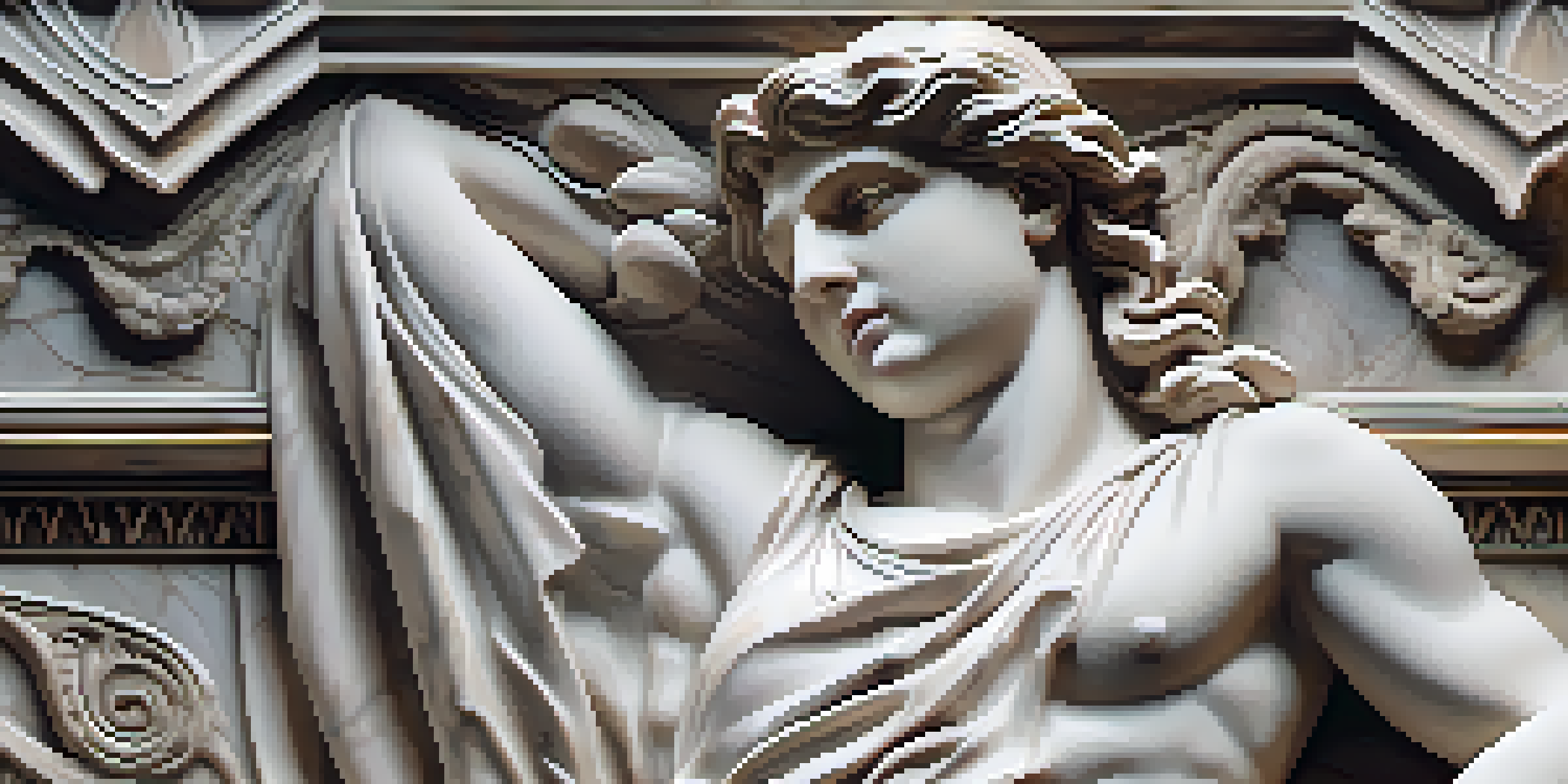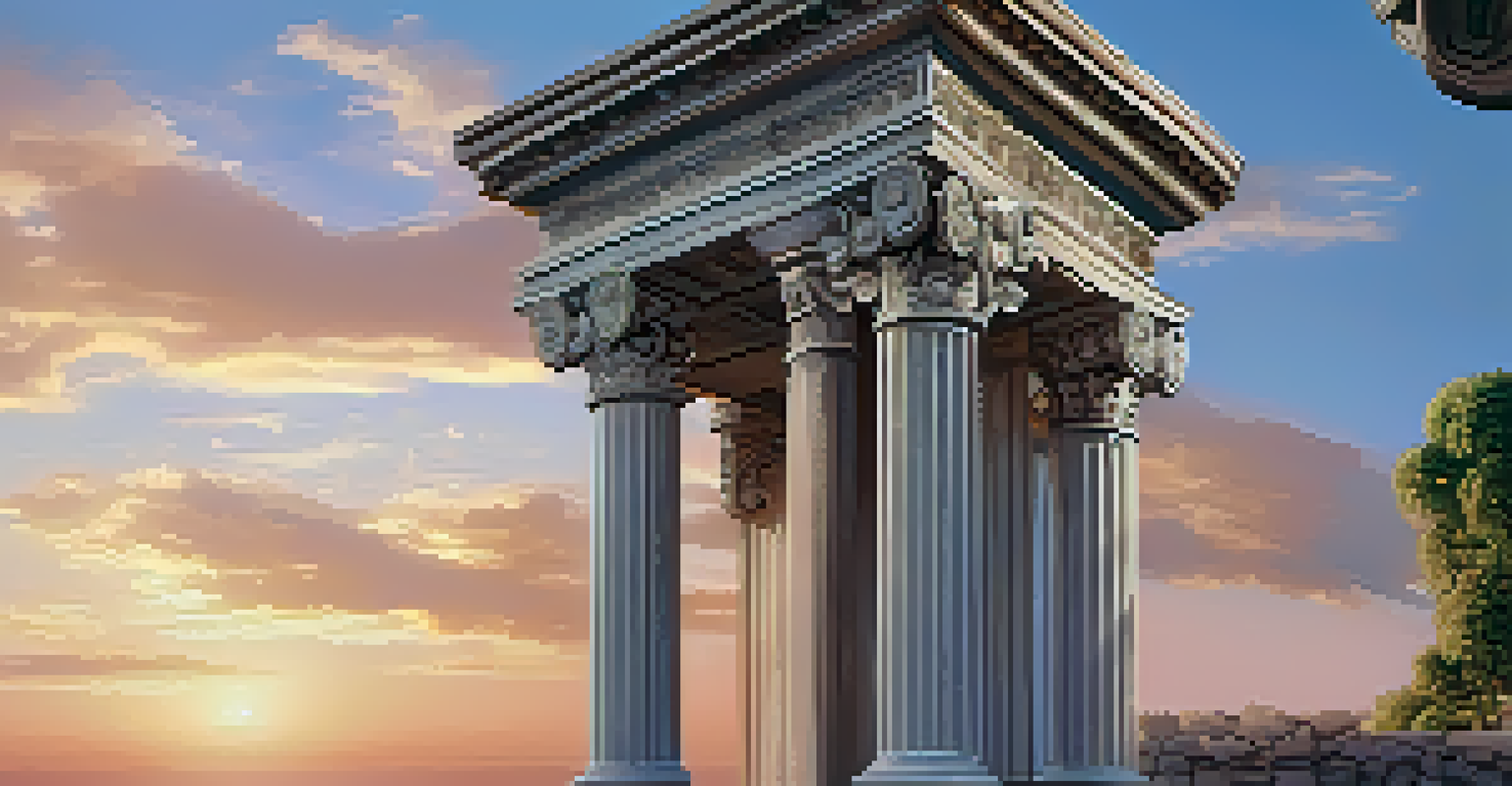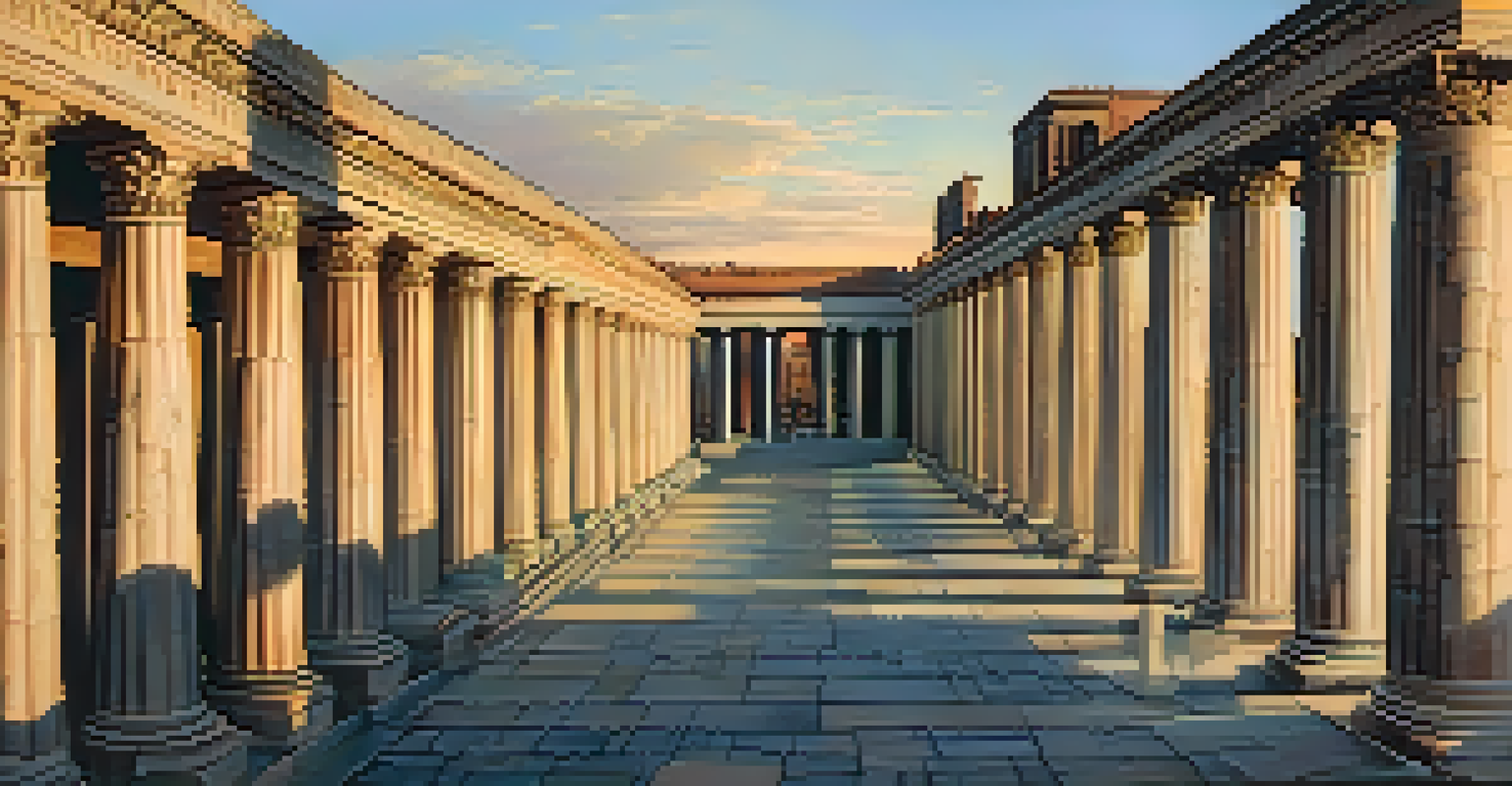Roman Carving Styles: Influence on Art and Architecture

Introduction to Roman Carving Styles and Their Origins
Roman carving styles have a rich history that traces back to ancient times, influenced by Etruscan and Greek art. These early styles laid the foundation for what would become a distinctive Roman aesthetic. The Romans were not just imitators; they adapted these influences to create something uniquely their own, blending functionality with beauty.
Art is the most beautiful of all lies.
The art of carving in Rome evolved significantly, showcasing a variety of techniques and materials. From intricate reliefs to grand statues, Roman artists demonstrated their skill in manipulating stone and marble. This evolution was not just about aesthetics; it also reflected the social and political climate of the time.
Understanding these origins allows us to appreciate the complexities of Roman carving styles. They were not merely decorative but served as a means of communication, conveying messages about power, religion, and culture. This interplay of art and society would influence generations to come.
Key Characteristics of Roman Carving Techniques
Roman carving is characterized by its detailed reliefs and realistic portrayals. Artists mastered the art of perspective, creating depth in their works that captivated viewers. This attention to detail is evident in both public monuments and private sculptures, showcasing the skill and innovation of Roman craftsmen.

Another hallmark of Roman carving is the use of various materials, such as marble, limestone, and wood. Each material brought its own texture and character, allowing artists to express different themes and emotions. For instance, marble was favored for its durability and elegance, often used in monumental works.
Origins of Roman Carving Styles
Roman carving styles evolved from Etruscan and Greek influences, creating a unique blend of functionality and beauty.
Additionally, the techniques employed by Roman carvers were diverse, ranging from low reliefs that barely protruded from the background to high reliefs that created striking three-dimensional effects. These techniques helped create a sense of movement and life within the stone, making the figures appear almost animated.
Influence of Roman Carving on Sculpture
Roman carving styles significantly influenced the development of sculpture throughout history. Their emphasis on realism and the portrayal of human emotions set a new standard for artistic expression. This focus on the individual would later inspire Renaissance artists, who sought to revive classical ideals.
The greatest artist is the one who knows how to blend the beauty of nature with the precision of human craftsmanship.
Moreover, the techniques developed by Roman sculptors laid the groundwork for future generations. For instance, the use of contrapposto, a pose that gives a dynamic quality to figures, became a fundamental aspect of Western sculpture. This technique allows for a more naturalistic representation of the human form.
The legacy of Roman carving can be seen in countless works of art that followed, from the statues of Michelangelo to the works of modern sculptors. Their ability to blend realism with idealism continues to inspire artists today, proving the timeless relevance of Roman carving styles.
Architectural Applications of Roman Carving Styles
Roman carving styles were not limited to sculpture; they also played a crucial role in architecture. The incorporation of carved elements into buildings added a layer of artistry that enhanced their grandeur. From ornate columns to intricate friezes, carving was essential to Roman architectural design.
One of the most notable examples is the use of relief sculptures on triumphal arches, which celebrated military victories and important events. These carvings told stories that connected the past with the present, serving both decorative and commemorative purposes. They transformed mere stone structures into powerful symbols of Rome's might.
Impact on Sculpture and Architecture
The techniques and realism of Roman carving significantly shaped the development of sculpture and architectural design throughout history.
Additionally, Roman carvings often included decorative elements such as acanthus leaves and scrolls, enriching the visual experience of architectural spaces. These motifs not only beautified buildings but also conveyed cultural significance, linking architecture to the broader artistic landscape of the time.
The Role of Roman Carving in Public Commemoration
Carving played a pivotal role in public commemoration, serving as a visual narrative of Roman history and achievements. Monuments adorned with reliefs and inscriptions celebrated the lives of emperors, generals, and notable citizens. This practice helped solidify the legacy of these figures in the minds of the public.
Noteworthy examples include the Column of Trajan, which features a continuous frieze that recounts the Dacian Wars. This monumental work is a testament to the power of carving to convey complex stories in an engaging manner. Such pieces were more than art; they were tools of propaganda, reinforcing the ideals of Roman virtue and strength.
Through these commemorative carvings, the Romans created a collective memory that transcended generations. The visual narratives served to inspire pride and unity among the populace, cementing the importance of art in the political and cultural fabric of society.
Cultural Exchange: Roman Carving Styles and Their Adaptations
The Roman Empire was vast, encompassing diverse cultures and traditions. As a result, Roman carving styles absorbed influences from the regions they conquered, leading to a rich tapestry of artistic expression. This cultural exchange not only enhanced Roman art but also facilitated the spread of their techniques.
For instance, the incorporation of Eastern motifs and styles can be seen in Roman carvings from provinces like Egypt and Asia Minor. These adaptations reflect a blending of artistic ideas, creating hybrid forms that were both innovative and visually striking. This cross-cultural dialogue enriched the artistic landscape of the empire.
Cultural Exchange and Adaptation
Roman carving styles incorporated diverse cultural influences from conquered regions, leading to innovative artistic expressions.
Such interactions laid the groundwork for future artistic movements, demonstrating the importance of collaboration in the evolution of art. The legacy of these exchanges can still be felt today, as artists continue to draw inspiration from diverse cultures, echoing the spirit of the Romans.
The Enduring Legacy of Roman Carving Styles
The influence of Roman carving styles is evident in various aspects of modern art and architecture. From neoclassical buildings to contemporary sculptures, the principles established by Roman artists continue to resonate. Their commitment to realism and beauty remains a guiding force for artists around the world.
Moreover, the study of Roman carving techniques has provided invaluable insights for art historians and students alike. Understanding the methods and motivations behind these works allows us to appreciate their significance in the broader context of art history. This knowledge fosters a deeper connection to the past.

Ultimately, the legacy of Roman carving styles is a testament to the timeless nature of great art. As we continue to explore and celebrate these influences, we honor the creativity and innovation of those who came before us, ensuring that their stories and artistry live on.